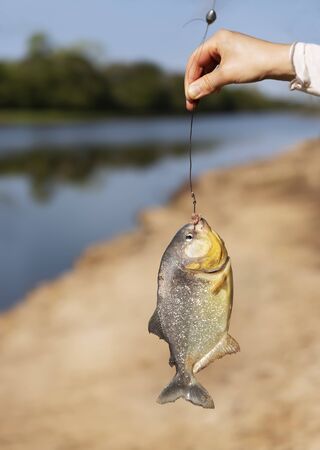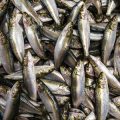1. Understanding the Impact of Heat on Fish
Fishing during the summer months can be a blast, but hot weather brings special challenges for both anglers and fish. When water temperatures rise, fish feel it in big ways. Their bodies have to work harder, and they become much more sensitive to stress—especially when being caught and handled by humans. This is why safe handling and proper release practices are even more important when it’s hot out.
How High Temperatures Affect Fish
Unlike humans, fish can’t regulate their body temperature—they match the water around them. As water heats up, oxygen levels drop, making it tough for fish to breathe. At the same time, their metabolism speeds up, so they need even more oxygen just to survive. This combination means that even a short struggle on your line or a few extra seconds out of the water can have serious consequences.
Main Effects of Heat on Fish
| Effect | What Happens | Why It Matters |
|---|---|---|
| Lower Oxygen Levels | Fish have less oxygen available in warm water. | Makes them tire out faster and recover slower after being caught. |
| Higher Stress | Fish get stressed more easily in heat. | Increases risk of injury or death after release. |
| Faster Metabolism | Fish burn energy quicker in hot temps. | They need more recovery time but get less oxygen to help them bounce back. |
Why Handling Practices Matter More in Summer
The risk of unintentional harm goes up as the thermometer rises. Quick handling, keeping fish wet, and minimizing air exposure all help increase a fish’s chances of survival after release. During hot spells, these steps aren’t just good practice—they’re essential if you want your favorite fishing spots to stay healthy and full of life all summer long.
2. Preparing for Safe Catch and Release
Essential Gear for Hot Weather Fishing
When fishing in hot weather, having the right gear is key to protecting both you and the fish. Here’s a quick list of must-have items:
| Item | Why It Matters |
|---|---|
| Rubberized Landing Net | Reduces fish scale and slime damage compared to traditional nets. |
| Barbless Hooks or Crimped Barbs | Makes hook removal quicker and less stressful for the fish. |
| Pliers or Hook Removers | Helps you quickly and safely remove hooks without handling the fish too much. |
| Wet Hands or Gloves | Prevents removing the fish’s protective slime coat, which is critical in hot weather. |
| Release Tools (like Boga Grips) | Lets you handle fish gently, especially larger species, reducing stress and injury. |
| Thermometer | Keeps you aware of water temperature so you can make safe decisions about catch and release. |
Bait Choices That Reduce Fish Stress
Live bait and artificial lures each have their pros and cons in hot weather. Using circle hooks with live bait can help reduce deep hooking, while single-hook lures are generally easier to remove than treble hooks. Try to avoid using baits that cause excessive struggle or long fights, as this increases stress on the fish.
Recommended Bait and Hook Pairings
| Bait Type | Best Hook Style | Hot Weather Benefit |
|---|---|---|
| Live Minnows/Shiners | Circle Hook (barbless) | Reduces deep hooking, easy release |
| Soft Plastics/Artificial Worms | Single Wide-Gap Hook (barbless) | Simplifies hook removal, less injury risk |
| Corn/Pellets (for carp or catfish) | Bait Holder Hook (barbless) | No need for excessive force during release |
Techniques for Safe Handling and Release in Summer Heat
- Keep Fish Wet: Always wet your hands before touching any fish. If possible, unhook them while they’re still partially submerged in the water.
- Avoid Prolonged Air Exposure: Try to keep the fish out of water for less than 15 seconds—especially important when temperatures are high.
- Handle Gently: Support the fish horizontally with two hands, one under the belly and one near the tail. Avoid squeezing tightly or placing fingers in gills or eyes.
- Quick Photos Only: If you want a picture, have your camera ready beforehand to minimize time out of water.
- Select Release Spots Carefully: Choose shaded areas with good water flow to help revive exhausted fish faster.
- If a Fish Seems Stressed: Hold it facing into the current until it swims away on its own power.
Troubleshooting Common Issues During Hot Weather Releases
| Problem | Solution |
|---|---|
| The fish won’t swim away right away. | Gently hold it upright in the water facing into the current; move it back and forth if needed until it revives. |
| The hook is deeply embedded. | If you can’t safely remove it, cut the line as close to the hook as possible—don’t rip it out. |
| The fish is bleeding from the gills or mouth. | This may be fatal; minimize handling, return it gently, and avoid future deep hooking by using circle hooks or barbless options. |
The right preparation makes a huge difference when practicing catch and release in hot weather. By choosing smart gear, using gentle techniques, and paying attention to how you handle each fish, you’ll help ensure healthy releases—even when summer temps are soaring.
![]()
3. Best Practices for Handling Fish
Keep the Fish Wet
During hot weather, it’s especially important to keep fish wet at all times. Warm air and water can quickly stress fish, so always wet your hands before touching them and try to handle fish in the water as much as possible. Using a rubberized landing net helps prevent injuries and keeps fish moist while you unhook them.
Limit Air Exposure
Fish can suffer from heat stress and lack of oxygen when out of the water, especially on hot days. Try to keep fish in the water until you’re ready to release them. If you need to take a photo, have everything ready ahead of time and limit air exposure to less than 10 seconds whenever possible.
| Step | Why It’s Important | Recommended Time |
|---|---|---|
| Photo/Measurement | Reduces stress and chance of injury | < 10 seconds out of water |
| Unhooking | Prevents overheating and suffocation | Do in water if possible |
Use Proper Hand Placement
Your grip matters! Always use wet hands or gloves to hold the fish gently. Support the belly and avoid squeezing around the gills or eyes. This prevents internal injuries and protects the slime coat that helps fish stay healthy, especially when temperatures are high.
Proper Hand Placement Guide
- Small Fish: Hold horizontally with one hand supporting under the belly.
- Larger Fish: Use both hands—one behind the head, one under the tail.
- Avoid: Lifting by jaw, gills, or squeezing tightly.
Quick Reference Table: Safe Handling Tips in Hot Weather
| Tip | Description |
|---|---|
| Keep Fish Wet | Wet your hands and minimize time out of water. |
| Limit Air Exposure | No more than 10 seconds above water for photos or measurements. |
| Support Properly | Hold fish horizontally with gentle support under belly/tail. |
| Avoid Gills/Eyes Contact | Never touch or squeeze gills or eyes to prevent serious harm. |
4. Quick and Gentle Release Techniques
Step-by-Step Guide for a Fast and Safe Fish Release
Releasing fish quickly and gently is extra important during hot weather, when high water temperatures can stress fish even more. Follow these simple steps to help your catch swim away strong and healthy:
1. Keep the Fish in Water as Much as Possible
Minimize the time fish spend out of water. Prepare your camera and tools before landing the fish so you can work fast.
2. Handle with Wet Hands or Gloves
Always wet your hands or use wet, fish-friendly gloves before touching the fish. This helps protect their delicate slime coating, which keeps them healthy.
3. Use Proper Tools for Hook Removal
Have a pair of long-nose pliers or a hook remover ready. Remove hooks quickly and carefully. If the hook is deeply embedded, it’s usually better to cut the line close to the hook rather than struggle and risk injury.
Quick Reference Table: Essential Release Tools
| Tool | Purpose |
|---|---|
| Pliers/Hook Remover | Safely remove hooks with minimal handling |
| Dehooker | Easily dislodge deep hooks |
| Fish Grips/Lip Grippers | Secure larger fish without squeezing or harming them |
| Wet Towel/Gloves | Protect slime coat during handling |
4. Support the Fish Gently
If you need to lift the fish, support it horizontally with one hand under the belly and one at the tail. Avoid squeezing tightly—firm but gentle is best.
5. Revive Before Release (If Needed)
If the fish seems tired, hold it upright in the water facing into the current or gently move it back and forth so water flows through its gills until it swims away on its own.
Why Speed Matters in Hot Weather
The hotter the water, the less oxygen it holds—meaning fish get stressed faster. The quicker you can release them, the better their chances of survival.
Summary Table: Quick Tips for Summer Releases
| Dos | Donts |
|---|---|
| Wet hands/tools first Remove hooks quickly Keep fish in water when possible Support body, not just jaw Revive if needed |
Avoid dry hands Don’t let fish flop on hot surfaces Don’t squeeze tightly Don’t delay release for photos Avoid rough handling |
This step-by-step approach helps ensure every fish you release has a fighting chance, even during those hot summer days on the water.
5. Know When Not to Fish
Recognize Unsafe Water Conditions
Hot weather can make fishing tough not just for you, but for the fish too. When water temperatures climb, oxygen levels drop, and this makes it much harder for fish to recover after being caught and released. It’s important to know the warning signs that tell you it’s time to give fishing a break.
Signs That It’s Too Hot for Catch-and-Release
| Sign | What It Means |
|---|---|
| Water feels warm to the touch (over 70°F/21°C) | Low oxygen; fish stress quickly |
| Fish seem sluggish or are gasping at the surface | They’re struggling to get enough oxygen |
| Unusually low river or lake levels | Higher temps and less habitat space |
| Algae blooms or murky water | Poor water quality, stressful for fish |
| No catch-and-release advisories from local agencies | It’s best to follow these warnings for fish safety |
Alternative Outdoor Activities During Extreme Heat
If the conditions aren’t right for safe fishing, don’t worry—there are plenty of other ways to enjoy the outdoors and stay connected to your love of angling.
Ideas for Non-Fishing Fun
- Kayaking or Canoeing: Explore new waters without casting a line.
- Hiking Near Water: Enjoy scenic trails along rivers or lakes while spotting wildlife.
- Photography: Capture the beauty of local fish habitats and landscapes.
- Tackle Maintenance: Organize your gear, tie new rigs, or try your hand at lure making.
- Learn New Skills: Take an online course on fly tying or fish identification.
- Volunteer: Help out at a conservation project or river clean-up event.
Remember:
The best anglers know that sometimes, the most responsible choice is to let the fish rest. By paying attention to water conditions and picking alternative adventures, you’ll help keep your favorite fishing spots healthy for years to come.


